Typical Charging Time for a 60V Lithium Ion Battery
If you're using an electric scooter, e-bike, or power tool that runs on a 60V lithium ion battery, knowing how long it takes to charge is crucial for planning your activities efficiently. In this guide, we’ll explore the factors that influence charging time, how to calculate it, and how to optimize the lifespan of your battery. Whether you're a beginner or a seasoned user, this comprehensive article will give you everything you need to know about the typical charging time for a 60V lithium ion battery.
- Understanding the 60V Lithium Ion Battery Configuration
- Factors Affecting Charging Time for a 60V Lithium Ion Battery
- Calculating the Typical Charging Time for a 60V Lithium Ion Battery
- Optimal Chargers for a 60V Lithium Ion Battery
- Charging Best Practices to Extend Battery Life
- Fast Charging a 60V Lithium Ion Battery
- Charging Safety Tips for 60V Lithium Ion Batteries
- Signs of Charging Problems in Your 60V Lithium Ion Battery
- How to Maintain Charging Efficiency
- Comparing Charging Times Across Battery Voltages
- FAQs About Charging a 60V Lithium Ion Battery
- Future Trends in 60V Lithium Ion Battery Charging
- What’s the Typical Charging Time for a 60V Lithium Ion Battery
Understanding the 60V Lithium Ion Battery Configuration
What Is a 60V Lithium Ion Battery?
A 60V lithium ion battery typically consists of 16 lithium-ion cells connected in series. Each cell contributes about 3.7V nominal voltage, making up a combined 59.2V nominal and about 67.2V when fully charged. These batteries are widely used in mid-to-high powered applications such as electric scooters, bikes, motorcycles, and even solar storage systems.
Common Applications of 60V Lithium Ion Batteries
Electric scooters and mopeds
E-bikes and fat tire bikes
Small electric motorcycles
Portable power stations
Backup systems in solar kits
Factors Affecting Charging Time for a 60V Lithium Ion Battery
1. Battery Capacity (Ah)
Battery capacity, measured in amp-hours (Ah), is the most critical factor in determining charge time. A 60V 20Ah battery will take significantly less time to charge than a 60V 40Ah battery, assuming the same charger is used.
2. Charger Output Current (Amps)
The charger's output current (A) directly affects how fast your battery will recharge. A 5A charger will charge a 20Ah battery in approximately 4 hours, whereas a 10A charger could do it in 2 hours.
3. Charger Efficiency
Most lithium-ion chargers operate at 85-95% efficiency. Losses in conversion and heat can slightly increase charge time, especially with lower-quality chargers.
4. Depth of Discharge
If your 60V lithium ion battery is only 50% discharged, charging will naturally take less time than if it’s fully depleted.
5. Battery Management System (BMS)
Modern batteries include a BMS that controls charging to ensure safety and longevity. The BMS can slow down charging near full capacity to avoid overheating, which adds to the total charging time.
>>See also Understanding the Difference Between EVE MB31 and LF304 Batteries
Calculating the Typical Charging Time for a 60V Lithium Ion Battery
Basic Formula
To estimate charging time, you can use the following formula:
Charging Time (hours) = Battery Capacity (Ah)÷Charger Output (A)×1.2 (efficiency factor)
Example 1: 60V 20Ah Battery with 5A Charger
20 ÷ 5 = 4
4 × 1.2 = 4.8 hours
Example 2: 60V 30Ah Battery with 10A Charger
30 ÷ 10 = 3
3 × 1.2 = 3.6 hours
This calculation assumes the battery is fully discharged and accounts for real-world inefficiencies.
Optimal Chargers for a 60V Lithium Ion Battery
Matching Charger to Battery
Always use a charger rated for your battery’s voltage and current. A mismatched charger can lead to:
Slower charge times
Shorter battery life
Safety hazards (overcharging, overheating)
Recommended Charger Specifications
|
Battery Size |
Ideal Charger Current |
Estimated Time |
|
60V 10Ah |
2A–3A |
4–6 hours |
|
60V 20Ah |
4A–5A |
5–6 hours |
|
60V 30Ah |
5A–7A |
5–7 hours |
|
60V 40Ah |
7A–10A |
5–6 hours |
Charging Best Practices to Extend Battery Life
Use a Quality Charger
High-quality chargers with proper voltage and current ratings reduce the risk of damage and ensure consistent performance.
Avoid Charging in Extreme Temperatures
Charge your 60V lithium ion battery in environments between 10°C to 40°C (50°F to 104°F) to maintain efficiency and protect internal cells.
Don't Leave Battery Plugged In Overnight
Although lithium batteries have BMS, prolonged trickle charging can degrade cells over time. Always unplug after a full charge.
Partial Charges Are Okay
Unlike older battery chemistries, lithium-ion doesn’t suffer from memory effects. Partial charges are perfectly fine and often recommended.
Fast Charging a 60V Lithium Ion Battery
Is Fast Charging Safe?
Yes, if both the charger and battery are designed for it. Some batteries support fast charging (2C rate), while others are best kept at a 0.5C or 1C charge rate.
Fast Charging vs. Standard Charging
|
Metric |
Fast Charging |
Standard Charging |
|
Time |
1–2 hours |
4–6 hours |
|
Heat Generation |
Higher |
Lower |
|
Impact on Lifespan |
Slightly reduced |
Longer lifespan |
Make sure your 60V lithium ion battery supports fast charging before using a high-current charger.
Charging Safety Tips for 60V Lithium Ion Batteries
Use Original Equipment
Use chargers and accessories from your device or battery manufacturer to avoid compatibility issues.
Avoid Overcharging
The BMS helps, but avoid leaving the charger plugged in indefinitely to minimize the risk of degradation.
Fire and Thermal Runaway Risks
Though rare, improperly charged lithium-ion batteries can overheat. Always charge in a safe, ventilated space.
Signs of Charging Problems in Your 60V Lithium Ion Battery
Slow Charging
Possible BMS throttling
Charger malfunction
Aging cells with higher resistance
Battery Doesn’t Reach Full Charge
Faulty charger
Calibration issues in the BMS
Cell imbalance
Overheating During Charging
Excessive charge current
Ambient temperature too high
Internal short or damage
How to Maintain Charging Efficiency
Keep Connectors Clean
Dirty connectors can cause voltage drops and heat buildup.
Charge After Each Use
For electric scooters or bikes, topping off the 60V lithium ion battery after use can improve reliability and prevent deep discharges.
Store at 50% Charge for Long-Term
If not using the battery for extended periods, store it at ~50% charge in a cool, dry place.
Comparing Charging Times Across Battery Voltages
|
Battery Voltage |
Common Capacity |
Charging Time (avg) |
|
36V |
10–15Ah |
3–5 hours |
|
48V |
15–25Ah |
4–6 hours |
|
60V |
20–40Ah |
4–8 hours |
|
72V |
30–50Ah |
6–10 hours |
The 60V lithium ion battery offers a balanced compromise between power and charging time, making it ideal for many modern electric vehicles.
>>See also Top Questions People Ask About Golf Cart Safety
FAQs About Charging a 60V Lithium Ion Battery
How Long Does It Take to Charge a 60V 20Ah Battery?
Approximately 4–6 hours with a 4–5A charger.
Can I Use a 48V Charger for a 60V Battery?
No. This could result in incomplete charging or potential damage. Always use a charger rated for 60V lithium ion battery systems.
What’s the Best Charger Size?
A charger with output current between 0.5C to 1C of your battery’s capacity. For a 20Ah battery, 10A is the safe maximum.
Future Trends in 60V Lithium Ion Battery Charging
As lithium battery technologies advance, so do charging methods. New innovations like GaN (Gallium Nitride) chargers, AI-managed charging protocols, and integrated solar input systems are beginning to appear in the 60V lithium ion battery segment.
What’s the Typical Charging Time for a 60V Lithium Ion Battery?
In summary, the typical charging time for a 60V lithium ion battery varies based on capacity, charger specs, and environmental conditions. For a 20Ah battery, 4–6 hours is average with a 4–5A charger. Higher-capacity batteries will take longer, but fast-charging solutions are closing the gap.
Whether you're using an e-bike, scooter, or off-grid power solution, understanding how to safely and efficiently charge your 60V lithium ion battery will save you time and extend your battery’s life.
Make sure to follow best practices, use quality equipment, and monitor your battery’s condition regularly. That’s the key to reliable performance and maximum lifespan from your 60V lithium ion battery.

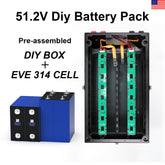

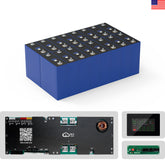

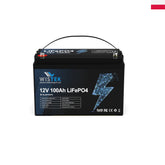
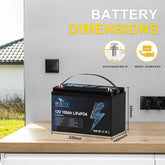
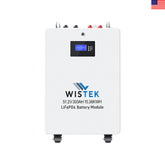
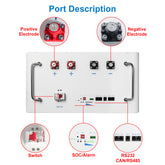
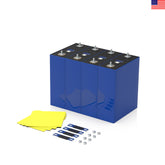
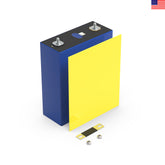
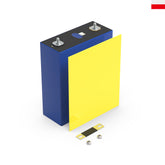

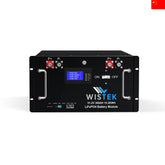
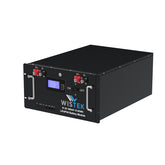
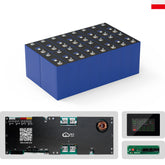








Leave a comment
All blog comments are checked prior to publishing